#moroccan zellige tiles
Explore tagged Tumblr posts
Text


( x )
#stim#visual stim#stim gifset#mine#yellow#green#red#blue#grey#zellige tiles#arabic tiles#moroccan tiles#slow#no hands#art
12 notes
·
View notes
Text
Ancient Zellige Pannels from Morocco, XIVe-XVIe Centuries, exposed at the Louvre Museum in France


NB : Zellige is a Moroccan ceramic tiles technique.
#morocco#moroccan culture#moorish#zellige#moroccan ceramic tile#ceramic tile#islamic ceramic tile#islamic museum#louvres#paris#museum#art history#art detail#photography#moors#moorish architecture#moroccan tiles#moroccan design#moroccan aesthetic#architecture#architecture lovers#architecture design#design#ethnic design#north africa#middle-east#mediteranean
12 notes
·
View notes
Text

new port richey tarpon springs handmade Moroccan faux zellij Zellige tile shower install installation installer
https://ceramictec.com/contact-us/
#tile#ceramictec#shower#tampa#wesleychapel#newtampa#new port richey#tarpon springs#zellige#faux#moroccan#install#installation#installer
0 notes
Text
Historic City of Meknes

Tucked between the Middle Atlas and the Rif Mountains, Meknes is a city where history whispers from every corner. Known as one of Morocco's four imperial cities, Meknes offers a blend of grandeur, culture, and charm that has earned it a place on the UNESCO World Heritage list since 1996. Walking through its gates feels like stepping back in time to an era of sultans, palaces, and towering walls. Let’s dive into the timeless allure of this extraordinary city!
Meknes rose to prominence in the 17th century under Sultan Moulay Ismail, a ruler with grand ambitions. Determined to make Meknes the heart of his empire, he transformed the city into a magnificent capital, building monumental gates, sprawling palaces, and imposing fortifications. His legacy is etched into every stone, making Meknes a living testament to Morocco’s imperial past.
One of Meknes’ most iconic landmarks is the Bab Mansour, often hailed as the most beautiful gate in Morocco. Completed in 1732, this monumental entrance is adorned with intricate zellige tilework, marble columns, and Kufic inscriptions. It served not only as a functional gateway but also as a statement of power and artistic brilliance. Stand beneath its arch, and you’ll feel the weight of history towering above.
Moulay Ismail's vision extended beyond palaces and mosques; he also built vast Royal Stables and Heri es-Souani, the granaries designed to store food for the city. These impressive structures could accommodate thousands of horses and hold massive supplies of grain, ensuring the empire's self-sufficiency. Walking through their cavernous interiors, you’ll marvel at the ingenuity that sustained a thriving imperial capital.

The Mausoleum of Moulay Ismail is a serene and sacred site, where the sultan himself rests. It’s one of the few religious places in Morocco open to non-Muslims. The mausoleum is a masterpiece of Moroccan design, with stunning stucco work, mosaic tiles, and serene courtyards. Visitors come to pay their respects and experience the tranquility of this hallowed space.
Located just outside Bab Mansour, El Hedim Square is Meknes' bustling hub. Once used for royal proclamations and public events, today it’s alive with street performers, market stalls, and cafés. As the sun sets, the square comes alive, offering a vibrant mix of sights, sounds, and flavors. Grab a mint tea and soak in the lively atmosphere—it’s an experience that captures the soul of Meknes.
Meknes is a city of walls, with an intricate network of fortifications stretching for over 40 kilometers. These walls, punctuated by grand gates and watchtowers, were designed to protect the imperial city and its treasures. Their sheer scale is awe-inspiring, a reminder of Moulay Ismail's vision of a city that would stand the test of time.
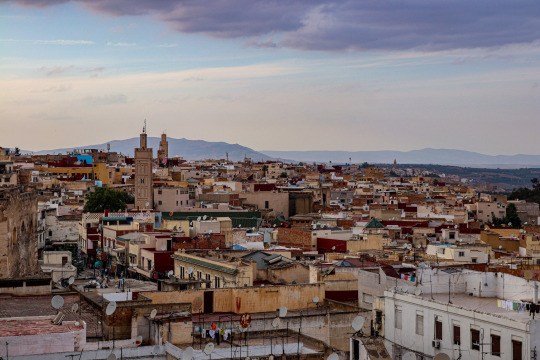
Meknes was inscribed as a UNESCO World Heritage Site for its exceptional testimony to the fusion of Islamic and European architectural influences. It stands as a symbol of Morocco’s imperial ambition and cultural richness. The city's preservation allows visitors to explore a well-preserved snapshot of 17th-century urban design and imperial grandeur.
While the historic core of Meknes is its main attraction, the surrounding area offers even more to explore. Just a short drive away, you’ll find the ancient Roman city of Volubilis and the sacred town of Moulay Idriss Zerhoun. Together, these sites paint a rich tapestry of Morocco’s historical and cultural layers.
Meknes is a city of contrasts: imperial yet approachable, grand yet intimate. It’s a place where history comes alive, and every corner tells a story. Have you wandered through its streets or stood in awe beneath Bab Mansour? Share your Meknes memories below!🏰✨🇲🇦
2 notes
·
View notes
Text

Discover the mesmerizing beauty of Moroccan handmade fountains by Cupacto Crafts! 🌟✨ Each piece, crafted from intricate zellige tiles, brings a splash of artistry and tradition to any space. Ready to add a touch of Morocco to your home?
🎨🌺 Which design speaks to you? Share your favorite in the comments! 💬🕌
2 notes
·
View notes
Text


Mlavi love Morocco.
Moroccan style is a distinctive trend in home decoration and fashion which takes its roots from Moorish architecture and Moroccan architecture. The boho-chic Moroccan style has become famous in the last decades with many celebrities adopting the style from Yves Saint Laurent to Will Smith.
From traditional Moroccan lanterns, Berber rugs, brass door knockers, Moroccan tiles (Zellige) to Moroccan textile prints and art, Mlavi's Morocco collection was inspired by Moroccan textile & architecture to offer vegan leather cross body bags, wristlet wallets, flat wallets, purses, pouches, luggage tags & makeup pouches with whimsical, beautiful Moroccan pattern prints.
They're great for everyday use as well as thoughtful gifts for your family & friends. Wholesale available at www.mlavi.com for gift shops, fashion accessories & clothing boutiques, book stores in Canada, USA & worldwide.
#vegan#wholesale#gift#fashion#wallet#pouch#accessories#boutique#onlineshopping#online shopping#Morocco#Moroccan
4 notes
·
View notes
Text
Moroccan Dreams: A Watercolor Journey-Posters with Wooden Frame

A delicate watercolor design inspired by the rich heritage of Moroccan architecture and landscapes. Soft, fluid strokes bring to life iconic elements such as arches, riads, and desert dunes, blending them seamlessly with intricate patterns reminiscent of zellige tiles. The palette features gentle hues of turquoise, warm ochre, sandy beige, and vibrant terracotta, evoking a sense of warmth and nostalgia. This design captures the charm and elegance of Morocco through a romantic and artistic lens.
Visit Our for more designs
#Moroccan watercolor#Soft artistic patterns#Zellige-inspired art#Fluid brushstrokes#Warm earthy tones#Nostalgic decor
0 notes
Text
Moroccan riads influence tiled interior of LA restaurant Zizou
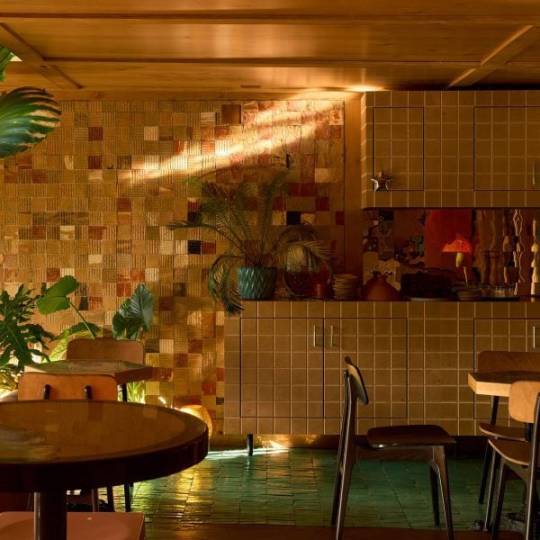
Moroccan influences and materials create an "urban oasis" at this restaurant in Los Angeles, which owners Maati Zoutina and Boris Macquin designed and built themselves. Situated in the Lincoln Heights neighbourhood, Zizou is a venture by two friends – a sound designer and an architect – who combined their skills and knowledge to bring their joint vision to life.
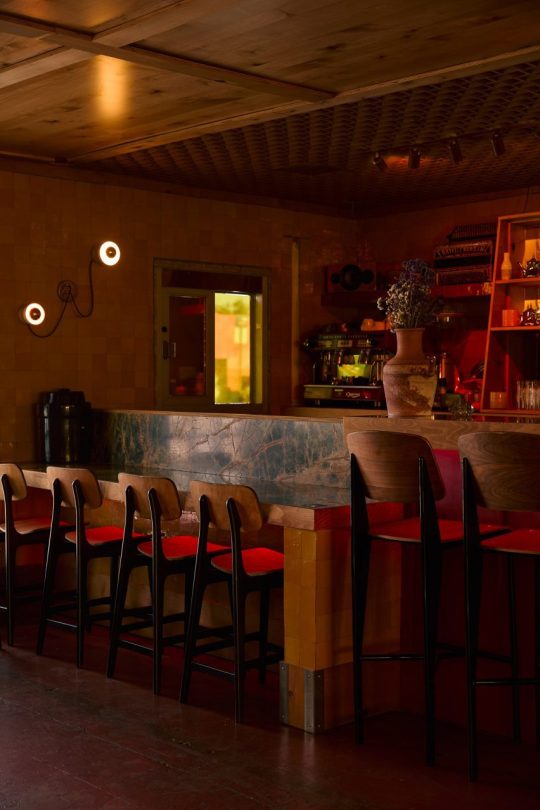
The bar area at Zizou is cosy and atmosphericThe pair found an abandoned former restaurant that they planned to renovate, but the building did not have the required permits and had to be entirely demolished. "We discovered this place by accident but immediately fell in love with the genius loci of it," the duo told Dezeen. "Our goal was to recreate the same atmosphere that we originally felt in this vacated building."
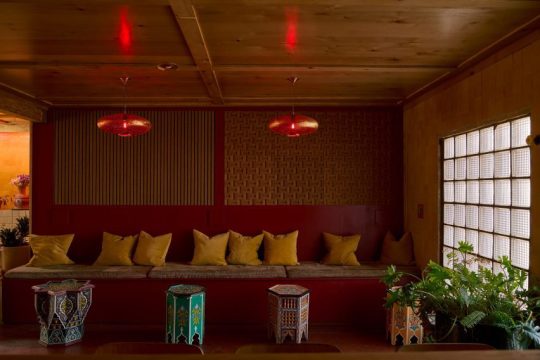
A variety of patterned tiles throughout the interior were sourced from Morocco, along with decorative tablesThey decided to keep the same footprint, height and general layout of the original building, then develop the interior concept around music. While waiting for permits during the Covid-19 pandemic, Zoutina and Macquin began designing the speakers that would eventually be installed in the space.
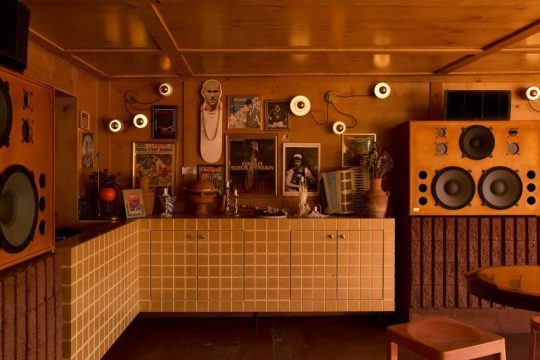
Owners Maati Zoutina and Boris Macquin based the restaurant's concept around music and built the sound system themselvesThe pair then landed of a Moroccan-influenced aesthetic that dictated the mood throughout the interior and exterior spaces, as well as the materials and furniture pieces – many of which were recycled or repurposed. "While aiming to respect the original charm of the space, we decided to develop our project around the music and the conviviality, two aspects that are often put aside in restaurants here in Los Angeles," they said. "We wanted to create an urban oasis tucked away from the noisy street and inspired by Moroccan riads."
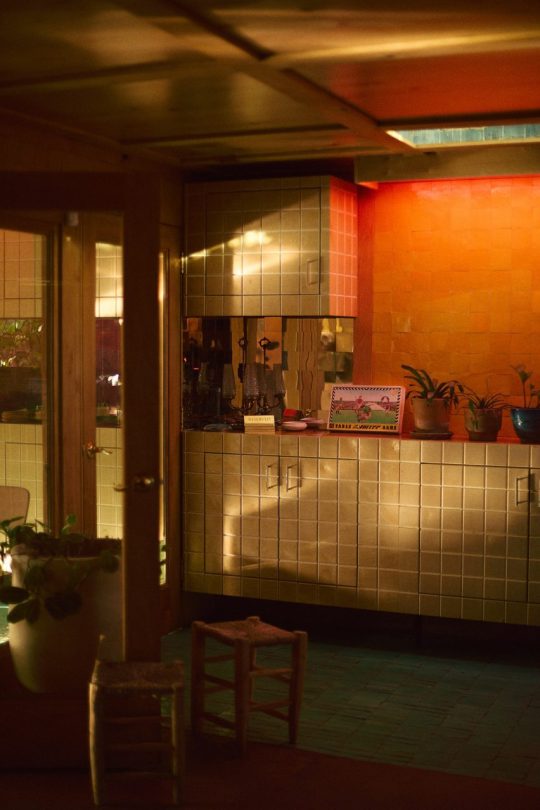
Zellige tiles cover large areas of the walls, floors and cabinetsTaking their time, Zoutina and Macquin sourced materials and experimented with design choices and products, creating their own lamps, surfaces and other items to populate the space. "Our budget for this project was extremely low, however, our strength was that we had time and that we both knew how to build," they said.
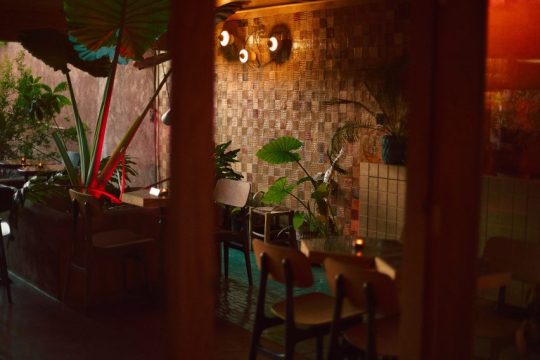
The restaurant blends indoor and outdoor dining, creating an "urban oasis" in LAInside Zizou, the vibe is warm and cosy, with plenty of natural light flowing into the dining area through the large opening to the patio. A variety of yellow, green and red zellige tiles with various patterns and textures – all hand-selected in Morocco and shipped over with other decor items – are installed without grout across large areas of the walls and floor.
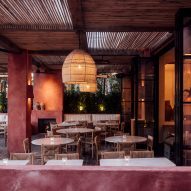
Great White Melrose in LA offers outdoor dining on a pink-plaster patio
Cabinets and counters are also tiled, while podiums that support the large wooden speakers are formed from vertical straight-stack bricks. Outside, a terracotta-toned planter was built around the perimeter with a stepped form so it could also be used for seating.
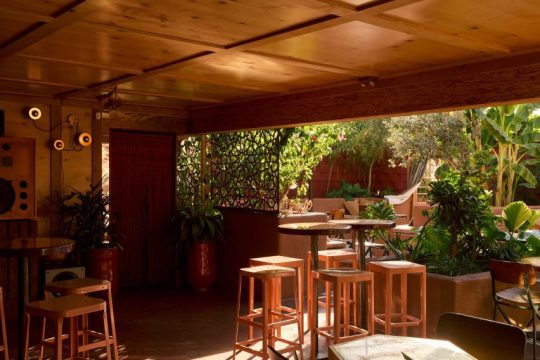
The duo designed and built the entire restaurant themselvesFoliage covers the tall boundary wall, which is integrated with glass bricks that are also used in the darker, atmospheric bar area. Mid-century-style chairs and stools contrast highly decorative and colourful Moroccan tables.
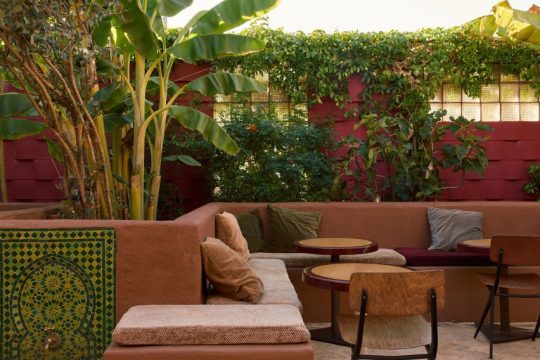
A planters around the perimeter doubles as bench seating for outdoor dining"Being able to work all craftmanship elements ourselves has been our main ally in order to create an organic result; something beautiful, laid-back and not pretentious," Zoutina and Macquin said. Other recent additions to the ever-evolving restaurant scene in Los Angeles include Holy Basil Market, a tiny Thai eatery designed by Weiszblüth & Brown, and Uchi West Hollywood, in which ORA utilised the city's fallen street trees. The photography is by Jordan DeGaetano. Read the full article
0 notes
Text
Moroccan Inspirations: Designing Exotic Courtyards for Your Phoenix Home
Introduction
Living in Phoenix, Arizona, presents unique challenges and opportunities when it comes to landscaping. With its arid climate and stunning desert landscapes, you can draw inspiration from various cultures to transform your outdoor spaces into an oasis of beauty and functionality. One such culture rich in aesthetic appeal is that of Morocco. This article explores how Moroccan inspirations can help you design exotic courtyards in your Phoenix home while incorporating elements that cater to the local environment and lifestyle.
Moroccan Inspirations: Designing Exotic Courtyards for Your Phoenix Home
Incorporating Moroccan design elements into your courtyard can infuse your outdoor space with vibrant colors, intricate patterns, and a sense of tranquility. Utilizing decorative tiles, lush greenery, and water features can create a serene atmosphere that is both refreshing and inviting. The goal is affordable weed control options to establish a harmonious blend of aesthetics and practicality tailored to the unique demands of the Phoenix environment.
The Essence of Moroccan Design
Moroccan architecture is characterized by its intricate details, bold color palettes, and connection to nature. Elements such as ornate tile work (zellige), imposing arches, and lush gardens are hallmarks of this style. When designing your courtyard, consider employing these elements to evoke the essence of Morocco while ensuring they thrive in Arizona’s climate.
Choosing the Right Layout for Your Courtyard
Creating a functional layout is crucial for any courtyard design. In Moroccan-inspired designs, central water features often serve as lawn fertilizer service focal points around which seating areas and plantings are arranged. Consider the flow of movement within your space; make sure there’s enough room for guests to mingle while enjoying the lush greenery surrounding them.
Vertical Gardening Solutions for Small Phoenix Yards
With limited space in urban settings like Phoenix, vertical gardening solutions offer an excellent way to maximize garden area without sacrificing aesthetics or utility.

youtube
Why Vertical Gardening?
Vertical gardens not only save ground space but also provide a visual feast that captures attention. They can be designed using trellises, wall-mounted planters, or even repurposed materials like pallets or crates.
Best Plants for Vertical Gardens in Phoenix Succulents: Their ability to store water makes them perfect for dry climates. Climbing Vines: Plants like bougainvillea add vibrant colors. Herbs: Basil, thyme, and rosemary can thrive vertically while being useful in the kitchen. The Art of Bonsai: Adapting Japanese Traditions to Arizona's Climate
Bonsai trees represent patience and artistry; they are miniature trees painstakingly shaped over time through pruning and training.
Selecting Suitable Species for Bonsai
In Arizona's climate, certain species adapt better than others:
Juniper: Hardy against heat Pine: Known for resilience Ficus: Tolerates indoor settings well Caring for Your Bonsai Tree in Phoenix
0 notes
Text
MOROCCAN ZELLIGE - Cases






Add the beauty of Morocco to your phone with this stunning smartphone case featuring a traditional Zellige tile design. The intricate geometric patterns and vibrant colors will add a touch of exotic elegance to your device, while the durable construction protects it from scratches, bumps, and drops. Here are some of the benefits of this smartphone case: Unique and Stylish Design: This case is sure to stand out from the crowd with its beautiful Moroccan tile pattern. Durable Protection: The case is made of high-quality materials that protect your phone from scratches, bumps, and drops. Slim and Lightweight Design: The case is slim and lightweight, so it won’t add bulk to your phone. Perfect Gift: This case makes a perfect gift for anyone who loves Morocco or unique phone cases.
Seize the opportunity now and get our unique product at a special price for a limited time! Don't miss this golden opportunity to experience quality and excellence
#iphone cases#cases#artwork#art#degital art#iphone#phone#samsung#smart phone#maroc#zellige#morrocan#morrocan zellige
1 note
·
View note
Text


( x )
#stim#visual stim#stim gifset#mine#arabic tiles#zellige tiles#moroccan tiles#art#tiles#ceramics#slow#purple#grey#orange#blue#green
10 notes
·
View notes
Text
Zellij fragment, 1350 ~ (14th century), Tangier, Morocco
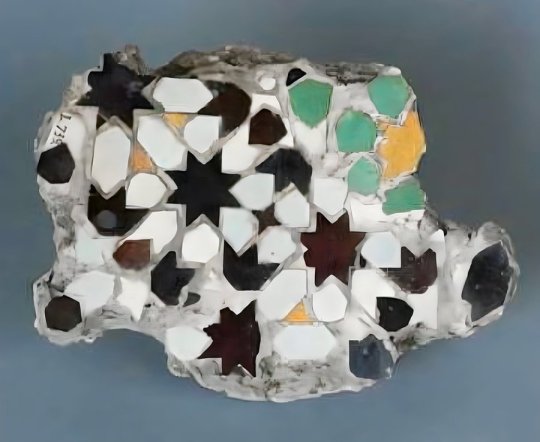
— Conserved at the Royal Museums of Art & History in Brussels, Belgium
#morocco#moroccan culture#north africa#moorish#moors#moroccan#africa#moroccan history#moroccan architecture#moroccan legacy#moorish legacy#moorish architecture#museum#zellij#zellige#ceramic tiles#islamic museum#moroccan ceramic tile#ceramic art#sculpture#carving#pottery#stoneware#ceramics#architecture history#amazigh#cities#places#buildings#architecture
4 notes
·
View notes
Text
Who Should Consider a Moroccan Majlis? Bring the World to Your Home with This Unique Design

The Moroccan Majlis is a traditional seating area often found in Moroccan homes, offering an intimate space for relaxation, socialization, and hospitality. Rooted in Moroccan culture, the Majlis serves as a place where family and friends gather to share stories, enjoy tea, and celebrate special occasions. Known for its vibrant colors, intricate patterns, and luxurious textiles, the Moroccan Majlis brings a unique and inviting ambiance to any home.
Immerse yourself in vibrant colors, intricate patterns, and luxurious textiles like silk and velvet
The design of a Moroccan Majlis is characterized by its lavish use of rich fabrics and ornate details. Seating typically consists of plush cushions or low couches arranged around the room's perimeter, creating a cozy and welcoming atmosphere. These cushions, called "lounges" or "divans," are often adorned with decorative pillows in a variety of sizes and shapes, providing comfort and adding visual interest.
Zellige tilework and carved woodwork add a touch of Moroccan artistry.
The textiles used in a Majlis are an essential aspect of the space's aesthetic. Traditional Moroccan fabrics such as silk, velvet, and brocade are commonly used, featuring intricate designs like geometric patterns, floral motifs, and arabesque elements. These textiles not only contribute to the room's beauty but also evoke a sense of warmth and opulence.
Low couches and plush cushions create a cozy atmosphere
Another key feature of the Moroccan Majlis is the use of vibrant colors. Deep, rich hues like red, blue, gold, and green dominate the color palette, creating a bold and lively ambiance. These colors are often complemented by metallic accents, such as gold or silver thread in the fabrics or decorative trim on the furniture.
Perfect for gathering with loved ones over steaming cups of Moroccan tea
The walls of a Majlis are often adorned with traditional Moroccan artwork, such as zellige tilework, which features intricate geometric patterns made from colored tiles. These tiles can be found on the walls, floors, and even tables, adding to the room's exotic and luxurious appeal. Other decorative elements may include carved woodwork, ornate lanterns, and traditional brass or copper items.
In addition to its visual appeal, the Moroccan Majlis is designed to be a functional space for entertaining and relaxation. Low tables, called "mida," are often placed in the center of the room, providing a surface for serving tea, snacks, or meals. Traditional Moroccan tea, served in ornate teapots and glasses, is a staple of any Majlis gathering, symbolizing hospitality and warmth.
A Celebration of Culture
Creating a Moroccan Majlis in your home can be a rewarding experience, allowing you to immerse yourself in the rich culture and history of Morocco. To achieve an authentic look, start with the seating arrangements, using low couches or cushions with decorative pillows. Choose rich fabrics and colors that reflect the traditional Moroccan style.
Next, incorporate traditional Moroccan elements such as zellige tilework, carved woodwork, and ornate lanterns. Add low tables for serving tea and other refreshments, and consider using traditional brass or copper items as decorative accents.
Finally, embrace the spirit of hospitality that the Majlis represents by inviting family and friends to gather in your space. Share tea, stories, and laughter as you enjoy the unique and enchanting ambiance of your Moroccan Majlis.
In conclusion, the Moroccan Majlis is a space that embodies the warmth, beauty, and hospitality of Moroccan culture. By incorporating traditional elements and embracing the vibrant colors and patterns, you can create a Majlis in your home that serves as a welcoming retreat for relaxation and socialization. Enjoy the rich atmosphere and the sense of connection that the Moroccan Majlis brings to your life.
0 notes
Text
The Allure of Designer Moroccan Tiles

Designer Moroccan tiles are a stunning addition to any space, exuding a unique charm and vibrant aesthetic that sets them apart from other tile designs. These tiles are not only visually captivating but also steeped in rich cultural heritage. In this article, we will delve into the history and craftsmanship of Moroccan tiles, explore their distinct features, and provide insights into how they can be used to enhance various spaces in your home.
A Glimpse into History
Moroccan tiles, also known as Zellige tiles, have a long and storied history dating back to the 10th century. Originating in the Maghreb region of North Africa, these tiles were heavily influenced by Islamic art and architecture. The intricate geometric patterns and bold colors that characterize Moroccan tiles are a reflection of the cultural and artistic diversity of the region. Over the centuries, the craft of making Zellige tiles has been passed down through generations, preserving the traditional techniques and designs that continue to captivate people worldwide.
Craftsmanship and Design
The creation of designer Moroccan tiles is a labor-intensive process that requires a high level of skill and precision. Each tile is handmade by artisans who have mastered the traditional techniques of shaping, glazing, and firing clay. The process begins with the selection of high-quality clay, which is then shaped into tiles and left to dry. Once dry, the tiles are meticulously hand-cut into intricate geometric shapes and patterns.
The glazing process is where Moroccan tiles truly come to life. Artisans apply vibrant glazes in a variety of colors, ranging from deep blues and rich reds to earthy greens and warm yellows. The glazed tiles are then fired in a kiln, where the intense heat sets the colors and gives the tiles their characteristic shine and durability. The result is a tile that is not only beautiful but also long-lasting and resistant to wear.
Distinct Features of Moroccan Tiles
Intricate Patterns: One of the most striking features of Moroccan tiles is their intricate geometric patterns. These designs often include complex motifs such as stars, interlocking shapes, and floral elements, all arranged in mesmerizing patterns that draw the eye and create a sense of movement.
Vibrant Colors: Moroccan tiles are known for their bold and vibrant color palette. The use of rich, saturated hues adds a lively and dynamic element to any space, making these tiles a perfect choice for creating focal points and adding visual interest.
Versatility: Despite their traditional origins, Moroccan tiles are incredibly versatile and can be used in a variety of settings, from modern and minimalist to eclectic and bohemian. They can be incorporated into both indoor and outdoor spaces, offering endless possibilities for creative expression.
Applications of Moroccan Tiles
Kitchen Backsplashes: Moroccan tiles make for stunning kitchen backsplashes, adding a pop of color and a touch of exotic elegance. The intricate patterns and vibrant colors can transform a simple kitchen into a visually captivating space.
Bathroom Accents: Incorporate Moroccan tiles into your bathroom design to create a spa-like retreat. Use them for shower walls, vanity backsplashes, or even as flooring to add a touch of luxury and sophistication.
Living Areas: Create a striking feature wall or fireplace surround in your living room with Moroccan tiles. Their unique designs can serve as a focal point, enhancing the overall aesthetic of the space.
Outdoor Spaces: Moroccan tiles are also perfect for outdoor applications such as patios, garden paths, and pool areas. Their durability and weather resistance make them a practical and beautiful choice for exterior designs.
Conclusion
Designer Moroccan tiles are a true testament to the artistry and craftsmanship of the Maghreb region. Their intricate patterns, vibrant colors, and versatility make them a standout choice for anyone looking to add a touch of elegance and individuality to their home. Whether used as a focal point in a modern kitchen or as a luxurious accent in a bathroom, Moroccan tiles are sure to enhance any space with their timeless beauty and cultural richness. Embrace the allure of Moroccan tiles and transform your home into a stunning work of art.
0 notes
Text
Explore Moroccan Craftsmanship: Join Our Fez Pottery and Zellige Workshops for an Unforgettable Cultural Experience
Immerse yourself in the rich cultural heritage of Morocco by participating in a Fez pottery workshop. Discover the beauty and intricacy of traditional Moroccan crafts as you learn from expert artisans who will guide you through the process of creating stunning pottery pieces. Our workshops are designed to cater to both beginners and experienced artists, ensuring a rewarding experience for all skill levels.
In addition to pottery, our zellige workshop offers an in-depth exploration of Moroccan tile making. Zellige is a revered tradition in Moroccan culture, involving the crafting of intricate mosaic tiles that have adorned palaces, mosques, and homes for centuries. Under the guidance of skilled craftsmen, you will learn the techniques of this ancient art form and create your own unique pieces.
Our hands-on Fez workshop provides an immersive experience, allowing you to delve into both pottery and zellige art forms. This comprehensive workshop not only enhances your artistic skills but also offers a deeper understanding of Moroccan traditions and their significance in the cultural landscape.
By joining our workshop, you will have the opportunity to:
Learn traditional pottery techniques and create your own pottery pieces
Explore the art of zellige and craft intricate mosaic tiles
Understand the cultural significance of these art forms in Moroccan history
Enjoy a hands-on learning experience in a supportive and inspiring environment
Whether you are a traveler seeking a unique cultural experience, an art enthusiast looking to expand your skills, or someone interested in the history and traditions of Morocco, our workshops offer something for everyone. Join us in Fez and take home not just your creations, but also unforgettable memories of your journey into the heart of Moroccan craftsmanship.
Visit our workshop page to learn more and book your spot today.
0 notes
Text
Embracing the Vibrant Soul of Marrakesh: A Traveler's Guide to Local Lifestyle

Marrakesh, often referred to as the "Red City" due to its stunning red sandstone buildings, is a city that brims with history, culture, and an undeniable charm. Nestled at the foothills of the snow-capped Atlas Mountains, Marrakesh has long been a crossroads for traders and travelers alike, creating a melting pot of Berber, Arab, and French influences. For modern travelers, this city offers a rich tapestry of experiences that blend the ancient and the contemporary in a way that few places can match.
A Glimpse into Marrakesh’s History
Founded in 1070 by the Almoravid dynasty, Marrakesh quickly grew into a significant cultural, religious, and trading center. The Almoravids introduced sophisticated irrigation techniques, transforming the arid landscape into lush gardens and orchards. The city's importance only grew under the Almohad Caliphate in the 12th century, during which many of its most iconic structures, including the Koutoubia Mosque, were built.
The Saadian dynasty in the 16th century marked another golden era for Marrakesh. They built the opulent Saadian Tombs and the El Badi Palace, which, though now in ruins, still hints at its former grandeur. The city continued to thrive, becoming a crucial hub for caravan routes crossing the Sahara, linking Africa with Europe and Asia.
The Heartbeat of Marrakesh: Jemaa el-Fnaa
No visit to Marrakesh is complete without experiencing the vibrant energy of Jemaa el-Fnaa, the city's main square. By day, it's a bustling marketplace where traders sell spices, textiles, and traditional crafts. By night, it transforms into a lively carnival of musicians, storytellers, and food stalls serving delicious Moroccan delicacies like tagine and couscous. The square is a UNESCO World Heritage site, recognized for its cultural significance and the unique blend of traditions it showcases.
The Medina: A Maze of Discovery
The medina, or old city, of Marrakesh is a labyrinth of narrow, winding streets and alleyways. Exploring this area is like stepping back in time. Each turn reveals something new: a hidden courtyard, an intricately decorated door, or a vibrant souk (market) selling everything from leather goods to jewelry. The medina is also home to numerous riads—traditional Moroccan houses with interior gardens or courtyards—that have been converted into boutique hotels, offering travelers an authentic and intimate experience.
Architectural Marvels
Marrakesh is a city of stunning architecture, where the artistry of the past meets the vibrancy of the present. The Koutoubia Mosque, with its towering minaret, is a symbol of the city and an excellent example of Almohad architecture. The Ben Youssef Madrasa, a former Islamic college, is another must-visit. Its exquisite tilework, carvings, and serene courtyard provide a glimpse into the architectural splendor of the Saadian era.
The Bahia Palace, built in the late 19th century, showcases the beauty of Moroccan design with its intricate stucco work, zellige tile mosaics, and lush gardens. Each of these sites offers a window into Marrakesh’s rich architectural heritage and the skill of its artisans.
Gardens of Tranquility
Amid the hustle and bustle of Marrakesh, several gardens offer a tranquil escape. The Majorelle Garden, created by French painter Jacques Majorelle and later restored by fashion designer Yves Saint Laurent, is a lush oasis of exotic plants and vibrant blue buildings. The Menara Gardens, with their olive groves and reflective pool set against the backdrop of the Atlas Mountains, provide a serene spot for a leisurely stroll.
Culinary Delights
Moroccan cuisine is a feast for the senses, and Marrakesh is the perfect place to indulge in its flavors. From the savory dishes cooked in traditional tagines to the sweet pastries dripping with honey, every meal is an adventure. Street food is an integral part of the culinary scene, and the stalls in Jemaa el-Fnaa offer a wide variety of treats, including grilled meats, seafood, and the famous Moroccan mint tea.
For a more refined dining experience, Marrakesh boasts numerous restaurants that blend traditional Moroccan flavors with modern culinary techniques. Whether you’re enjoying a meal in a luxurious riad or a bustling market, the food in Marrakesh is sure to leave a lasting impression.
The Souks: A Shopper's Paradise
The souks of Marrakesh are legendary, offering a treasure trove of goods for those willing to explore. From spices and textiles to pottery and jewelry, the markets are a sensory overload of colors, smells, and sounds. Haggling is part of the experience, and friendly negotiation can lead to some great deals. Whether you’re looking for a unique souvenir or simply enjoying the atmosphere, the souks are a must-visit.
Spa and Wellness: Hammams
No trip to Marrakesh would be complete without experiencing a traditional Moroccan hammam. These public baths offer a unique way to relax and rejuvenate. The process typically involves a steam bath, exfoliation with black soap, and a massage. Many riads and luxury hotels also offer private hammam experiences, combining traditional practices with modern comforts.
Modern Marrakesh
While deeply rooted in history, Marrakesh is also a city that embraces the modern. The Gueliz district, built during the French colonial period, is a testament to this. Here, you’ll find chic cafes, art galleries, and high-end boutiques. The city’s contemporary art scene is thriving, with several galleries and museums showcasing the works of both Moroccan and international artists.
Practical Tips for Travelers
Best Time to Visit: The ideal time to visit Marrakesh is during the spring (March to May) or autumn (September to November) when the weather is pleasant.
Dress Code: While Marrakesh is relatively liberal, it’s respectful to dress modestly, especially when visiting religious sites.
Currency: The local currency is the Moroccan dirham (MAD). It’s advisable to carry some cash, as not all places accept credit cards.
Language: Arabic is the official language, but French is widely spoken. English is also commonly understood in tourist areas.
Conclusion
Marrakesh is a city that captures the heart and imagination of every traveler who visits. Its rich history, vibrant culture, and stunning architecture create an experience that is both enchanting and unforgettable. Whether you’re wandering through the ancient medina, savoring the flavors of Moroccan cuisine, or simply soaking in the atmosphere of Jemaa el-Fnaa, Marrakesh offers a journey into a world where the past and present blend seamlessly, promising memories that will last a lifetime.
Credit
Marrakesh Minibus
Marrakesh Minibus Offers comfort and style with exclusive minibus tours.
0 notes